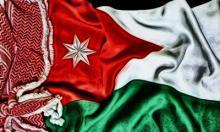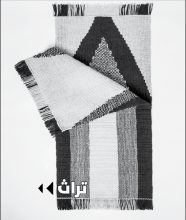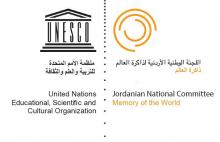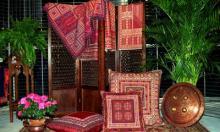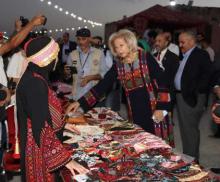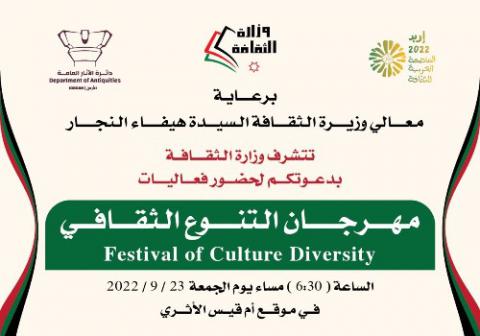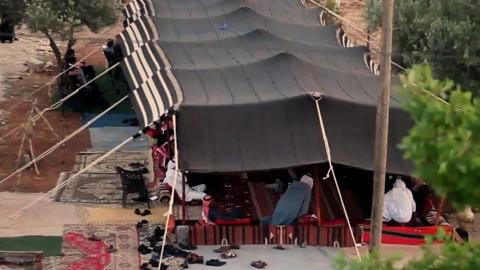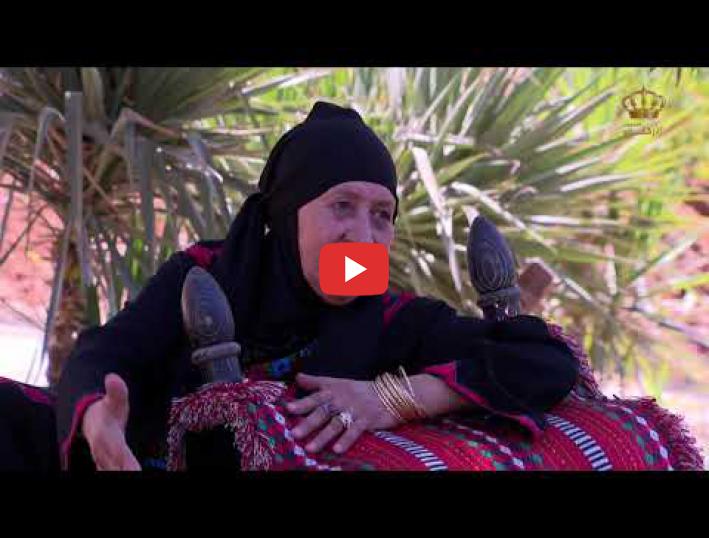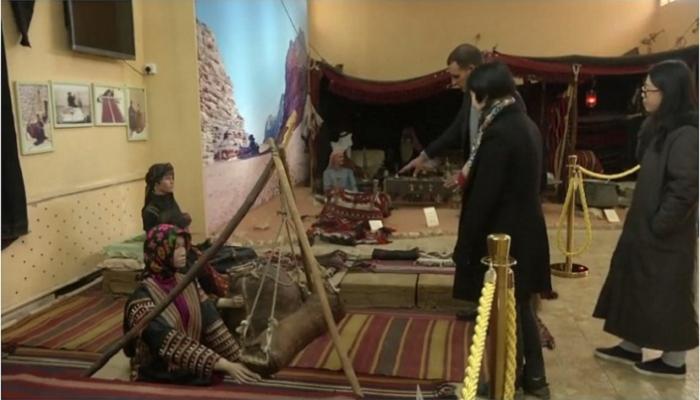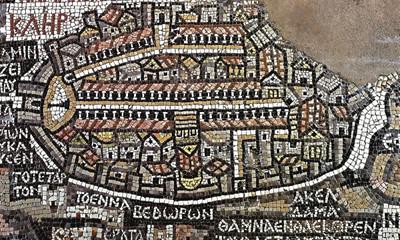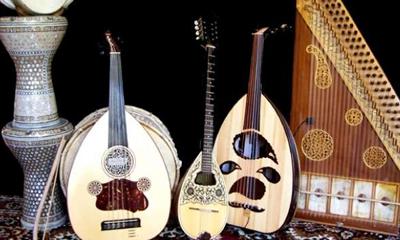- الرئيسية
- مديرية التراث
- نبذه عن المديرية
المزيدأولاً: نشأة المديرية تم تأسيس مديرية التراث في نهاية عام 2010 وذلك حرصاً من وزارة الثقافة على رعاية وصون التراث الثقافي غير المادي في المملكة الاردنية الهاشمية. «التراث الثقافي غير المادي » الممارسات والتصورات وأشكال التعبير والمعارف والمهارات - وما يرتبط بها من آلات وقطع ومصنوعات وأماكن ثقافية...
- أهداف مديرية التراث
- اقسام المديرية
المزيدأقسام مديرية التراث: 1- قسم البرامج التراثية : من أبرز مهامه تنظيم وتنفيذ ومتابعة المشاريع والبرامج والأنشطة المتعلقة بالتراث الثقافي غير المادي ضمن خطة المديرية والجهات ذات العلاقة، ومتابعة الاتفاقيات التي تعقدها المملكة مع المنظمات والهيئات الدولية لغايات تنفيذ المشاريع التي تقع ضمن نطاقها. 2...
- الاصدارات المزيد
- التعليمات والاتفاقيات المزيد
- نبذه عن المديرية
المزيد
- المشاريع
- مشروع المكنز الوطني
المزيداختصاصات لجنة ذاكرة العالم الأردنية الاسم: Jordanian Memory of the World committee اللجنة الأردنية لذاكرة العالم الهيكل: تتألف لجنة ذاكرة العالم الأردنية من لجنة رفيعة المستوى و 4 لجان فرعية متخصصة في مختلف جوانب اللجنة. الوظيفة: ستضطلع لجنة ذاكرة العالم في الأردن بمسؤولية...
- المشروع الوطني لحصر التراث
المزيدنبذة عن المشروع يهدف هذا المشروع إلى حصر التراث الثقافي غير المادي في كافة محافظات المملكة الأردنية الهاشمية، وبالتزامن. كما يهدف إلى إشراك المجتمع المحلي في الجرد، وإنشاء قاعدة بيانات شاملة، وتحديد عناصر التراث الثقافي غير المادي المهدّدة بالانقراض، ورفع الوعي بأهمية التراث الثقافي غير المادي حتى...
- مشروع تفريغ و أرشفة أشرطة الكاسيت المسجلة في أواسط السبعينيات
المزيدمشروع إعادة تأهيل المادة الصوتية المسجّلة في السبعينيات من القرن الماضي. (الذاكرة المسجّلة في أشرطة الكاسيت التقليدية) للحفاظ على الموروث الأردني الثقافي، والكنز الذي قامت بتسجيله نخبة من الباحثين في التراث في أواسط السبعينيات، وفي مناطق مختلفة من المملكة، ارتأت مديرية التراث أن يصار إلى البحث عن...
- برنامج ذاكرة العالم
المزيداختصاصات لجنة ذاكرة العالم الأردنية الاسم: Jordanian Memory of the World committee اللجنة الأردنية لذاكرة العالم الهيكل: تتألف لجنة ذاكرة العالم الأردنية من لجنة رفيعة المستوى و 4 لجان فرعية متخصصة في مختلف جوانب اللجنة. الوظيفة: ستضطلع لجنة ذاكرة العالم في الأردن بمسؤولية...
- مشاريع مدن الثقافة
المزيد
المشاريع
تم تخصيص جزء من مخصصات مدن الثقافة والالوية في الاعوام السابقة لدعم مشاريع تراثية تُعنى في الحفاظ على الموروث الشعبي الاردني وتسويق المنتج التراثي ودعم الافراد والجمعيات والفرق التراثية. حيث قامت مديرية التراث بالتنسيب بدعم المشاريع التي تحقق روية ورسالة المديرية وتسلط الضوء على المنتج التراثي... - مهرجان التنوع الثقافي
المزيد
المشاريع
يأتي ضمن احتفالات العالم باليوم العالمي للتنوع الثقافي الذي يصادف 16/5 من كل عام، ويهدف هذا المهرجان إلى الحفاظ على النسيج الاجتماعي الاردني وتعزيز الترابط بين كافة أفراد المجتمع الأردني وإبراز نسيج الحضارة الأردنية وجماليات التنوع الثقافي في الأردن والتعريف بالهوية الثقافية المتميزة لدى الأردن... - ترشيح العناصر على قوائم التراث الثقافي غير المادي
المزيد
المشاريع
بعد ان يتم حصر عناصر التراث الثقافي غير المادي في المملكة وادراجها على قوائم الحصر لدى مديرية التراث، تقوم المديرية وبالتنسيق مع مؤسسات المجتمع المدني بترشيح عناصر مختارة على قوائم اليونسكو للتراث غير المادي. إن ترشيح عنصر واحد على قوائم التراث سواء كان ملف وطني أو مشترك يستغرق عامين ويتطلب تحضير... - العناصر الاردنية المدرجة على قوائم اليونسكو
المزيد
المشاريع
تم ترشيح ملف (العادات والتقاليد والممارسات المتعلقة برقصة السامر) في الاردن على القائمة التمثيلية للتراث الثقافي غير المادي للإنسانية، وستعلن نتائج الترشيح خلال شهر تشرين الثاني من العام 2018. ترشيح ملف النخلة والعادات والطقوس المرتبطة بها: تراثاً عربياً مشتركاً على القائمة التمثيلية للتراث...
- مشروع المكنز الوطني
المزيد
- المركز الإعلامي
- مسارات ثقافية
- قواعد البيانات
- قاعدة بيانات المكنز الوطني
المزيد
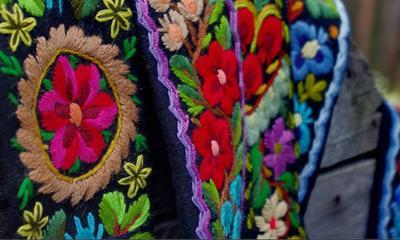
- قوائم الحصر الوطني
المزيد
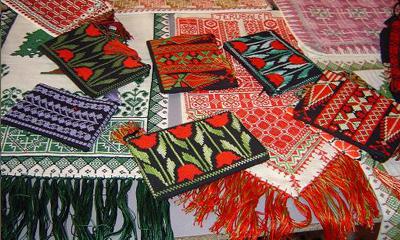
- قاعدة بيانات الحرفيين
المزيد
قاعدة بيانات الحرفيين
- قاعدة بيانات المكنز الوطني
المزيد

Al-Mansaf: A festive banquet and its social and cultural meanings
Al-Mansaf: A festive banquet and its social and cultural meanings
Food is, historically, the most distinguishing feature of human societies. Jordanian Mansaf is a highly regarded cultural symbol, in addition to being the most popular food in all Jordanian regions. It is representative of the national identity of all individuals, groups and communities in Jordan.
Al-Mansaf is the main feast dish served at all major events, celebrations and when guests visit. Preparing and eating Al-Mansaf creates order, security, and a sense of identity. It is a ritual of solidarity expressive of collective identity, morality and values.
Al-Mansaf meal is a traditional Jordanian dish which consists of meat cooked in a sauce of fermented dried yogurt (Jameed), and served with huge quantities of rice, sometimes overlying a layer of special bread called (Mashrouḥ or Šrak). When the dish is ready to serve, some people usually sprinkle the layer of meat with pine nuts, almonds and other tasty herbal seasonings. In the north of Jordan, a side dish full of radishes, onions, and pickles is usually added to the menu of Al-Mansaf. Al-Mansaf is associated with a traditional Jordanian culture based on an agro-pastoral lifestyle in which meat and yogurt are readily available.
In Jordan, Al-Mansaf is served on special occasions and feasts such as weddings and baby-births. In addition to being served for honoring guests and celebrating major religious holidays. For preparing the meal of Al-Mansaf, men and women gather to light the cooking fire. After that, a very large cooking pot full of meat and water is placed over the fire. The meat used is usually mutton. Often during cooking time, the culinarians exchange words about either personal concerns or communal problems. Once the meat is done boiling, the cook adds the Jameed to make what is known as Marees. Jameed is a dried fermented dairy product usually made from goats or sheep’s milk. It is a popular dairy product in various parts of Jordan. The main goals of producing this dried fermented dairy product (Jameed) are to improve storage life of the product, to reduce the substance bulk so as to save storage space and to reduce packaging and transportation costs.
Al-Mansaf in Jordan has become one of the resources for making a living for many Jordanian families, and in many cases, the main income source for many households. After the cooks make sure that meat and rice have been cooked long enough, they inform the host that meal is ready to be served. Then, a platter, mostly rounded and made of either metal or some other material, will be brought to start arranging the layers of the bread, rice, meat and dried almonds mixed with pine nuts. It must be pointed out that three types of Mansaf are usually prepared. The best is for dignitaries and main guests, the second for normal guests and very close relatives, and the third for the family the host. The first type is distinguished by the head of the ram on top of the heap of rice and meat. Once the platters of Mansaf are set and ready, the host gives directions to a group of people, usually his relatives, to start serving the food and carrying the trays to the area where people are supposed to eat. Often, Mansafs are carried either by young people or, in very few cases as in old times, by women. The process of serving is accompanied by Jordanian songs. Al-Mansaf is traditionally eaten collectively from a large platter. Five to seven people standing around the tray with the left hand behind the back and using the right hand instead of cutleries. In some cases, guests are allowed to use dishes and spoons.


